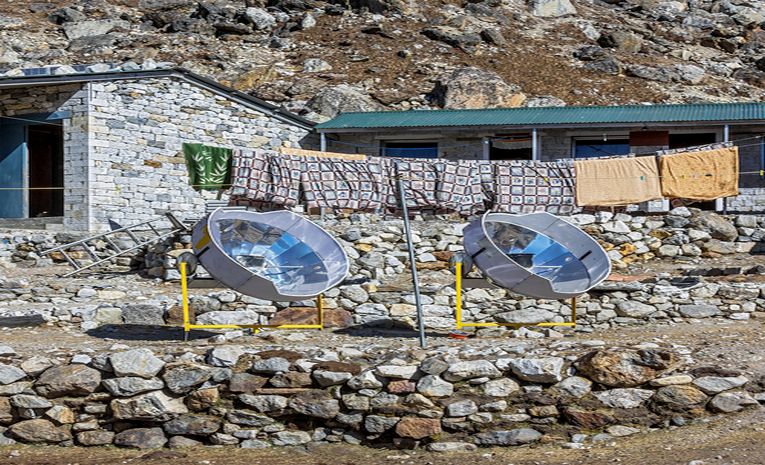We would all like to have free electricity, and if you've dumped those solar powered water panels off the roof, you may need something to fill that ugly space. Governments are offering to buy electricity from residential solar modules fitted on roofs. With a guaranteed price (check how long they will stick to that price) they aim to solve their energy shortages with the help of your roof. The mass of innovation that brought about present-day PVs is explained in detail, even including photosynthetic solar power, in this selection on - Solar Power.
There are some panels that you simply should not ask for. The world is full of people who have learned something and are unwilling to accept anything less than the best. Sorry but you are going to settle for one-third of the best. 44.7% efficiency in a solar panel refers to one of the best conversion abilities available. The concentrator triple-junction cell is a complex system that you won't find normally, because of the extreme expense of manufacture. They are absolutely, and only, suited to a space module or satellite.
Most residential and commercial solar cells are less efficient than these examples and therefore waste less cost on expensive materials. The most efficient of these are SunPower solar modules, with 21.5% conversion efficiency. With thin film technology, Q-cells, now owned by Hanwha, have many non-residential applications, along with First Solar modules which use cadmium telluride. Flexible solar panels are used by MiaSole to achieve a seemingly low 15.5% efficiency, but at least here we have the costs down to a minimum.
If the triple-junction type of cell is used, Sharp make a non-concentrating cell, while you can have a similarly-efficient double-junction cell with a concentrator as another option. Again, your little home is unlikely to afford the installation and maintenance of these modules, let alone the technology. In the latest products about 21.5% efficiency is available. This can be translated into a power density value which would be 175Watts per square metre. Research at Imperial College in London states that placing many tiny nanocylinders of aluminium on the light receiving surface improves the efficiency by extending the light path. T is this kind of innovation that is steadily increasing efficiency and reducing costs. Previously, gold and silver nanocylinders have been tried!
In the same area of production, polycrystalline and monocrystalline silicon are now used in 90% of modules and rigid or flexible thin film has taken over as a convenient method of all-in-one production. Cadmium telluride is an efficient and cheaper alternative. A glass base has the thin film overlaid with the cell while a polyester or polyimide film forms the flexible thin film. To complete the manufacturing process, lamination encloses and protects the module.
One of the latest residential issues is embedding smart modules with electronics that optimise power or track the maximum power point. If your solar module is shaded, these gizmos will allow most of the assembly to continue output, even if some strings of cells have zero capability.
Price is probably the most useful way of guiding yourself through the maze of module choice and installation. The clue is not the price of a module but the price per watt of the entire installation, if possible throughout its (relatively-short) life. Guarantees of 90% efficiency for 10 years, for example, are quite useful, although 80% after 20 years may be even better. In 2012, cost per watt was usually available at $0.60, reduced by umpteen amounts from the earliest PV modules. The north of Europe or North America would have higher costs than say Italy, Spain, California, or Australia. Half of the costs are for inverters, wiring, racking systems and possibly insurance, although most insurers absorb the extra load as well as your PV. Costs in the last 2 years or so have almost halved, as mass production increases and some subsidies decrease.
The future will bring cheaper and better modules, but probably only if the majority of us adopt the solar habit, not just for road signs, but for mainstream home use. Not only will we save more, the power stations will be partly ourselves, as we supply the grid with a large proportion of its needs. How much depends on the economy, national and local energy policies and that lazy ol' Sun.















